Deep one sculptures
Nuku Hiva, French Polynesia, 09.27.2016
Arrived here at the tiny airpstrip and loaded into a small pickup truck for a seventy-five minute ride across the island. We climb in elevation to 1,300 meters where we get to see lovely scenery as we wind back and forth around many volcanic mountain tops. There are deep canyons and wide mountain vistas. The tops are ragged in places reminding me of Moorea. There are some fern forests but mostly we see introduced pines which we will learn were planted and not to be harvested because the cost of labor here is too high to make it profitable. As we drove across we went up in elevation to a cloud forest. The elevation drops and rises as we wind back and forth crossing from one side of the island to the opposite coast. We wonder


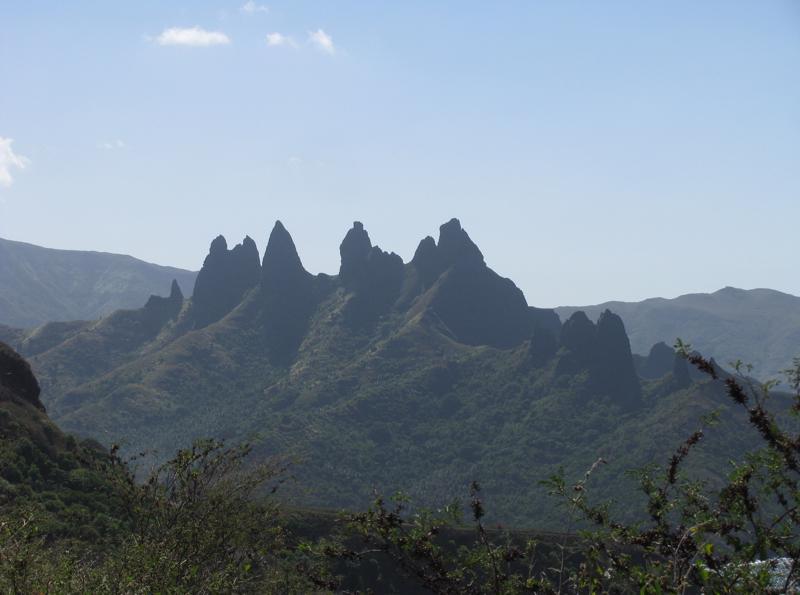
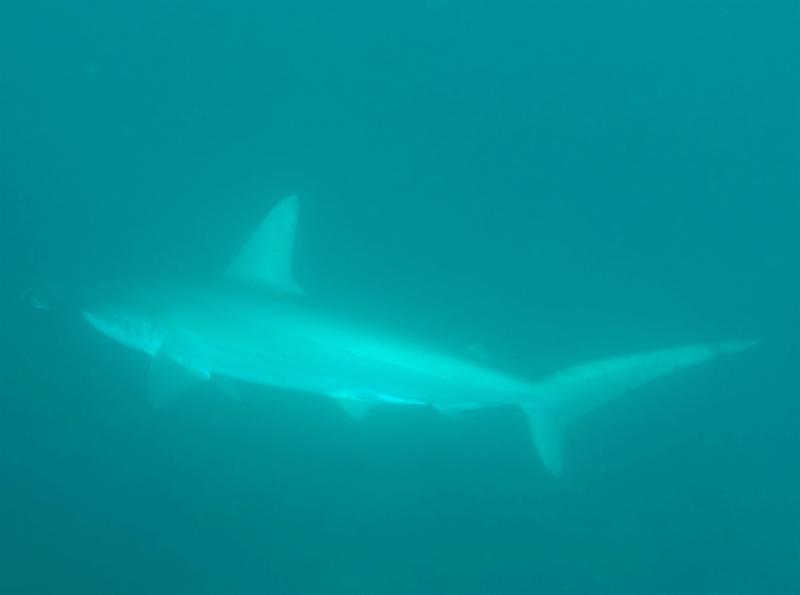
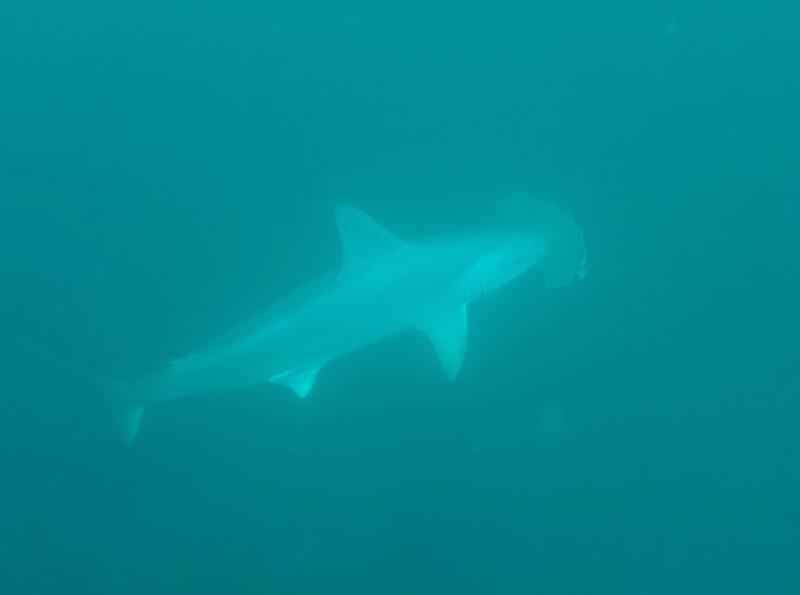
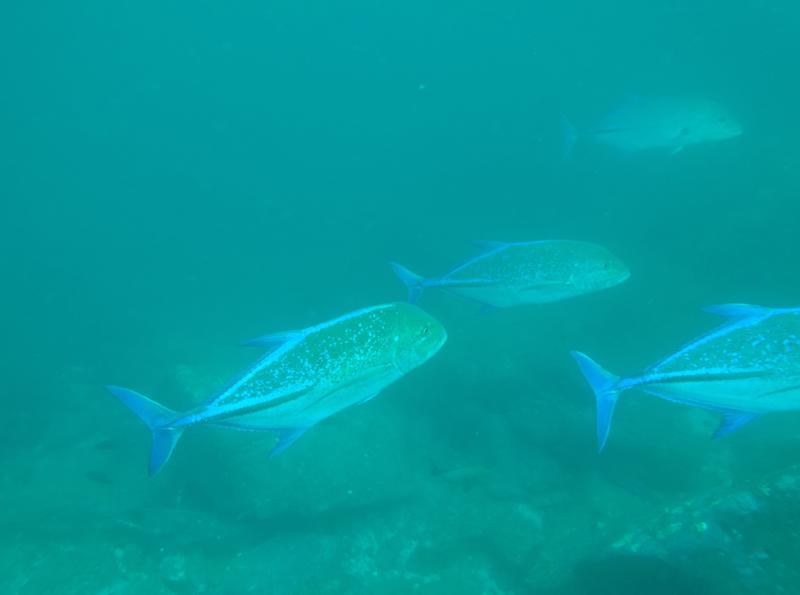
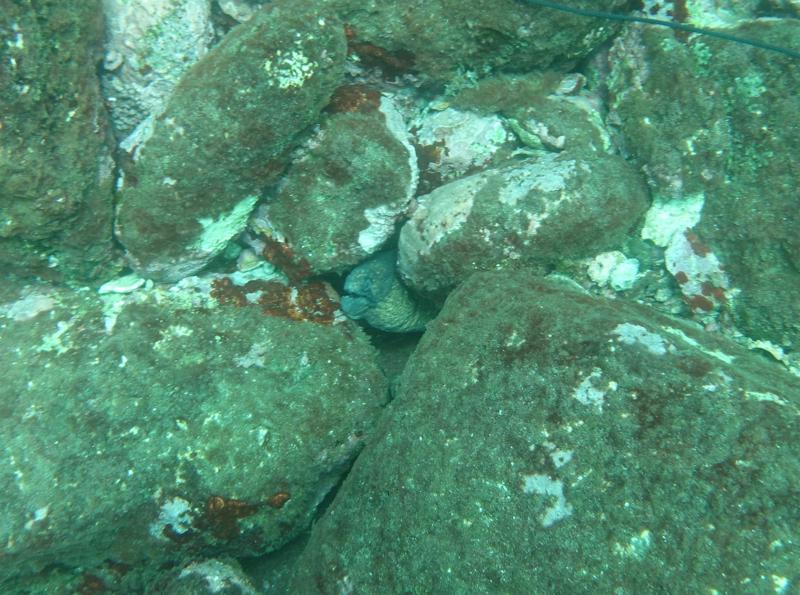
if this island has had similar problems with deforestation like Easter Island.
photo #1 This big eyed face reminds us of an Easter Island god, MakeMake. It also looks to be a "Deep One". Deep Ones are monsters that are featured in a game that Chick and I play. They are amphibian creatures that live in cities under the sea.
photo #2 and #3. Island scenery, lush to barren.
photo #4 and #5 sharks seen through murky water.
photo #6 Bluefin Jack fish.
photo #7 Moray eel
photo #8 This is a beautiful coconut tree with bright orange coconuts.
photo #9 This is in the carved wooden church. It shows Joseph and child Jesus holding a breadfruit.
photo #10 Baptismal font used to be a Polynesian mirror. They would fill this with water and see their reflection.
We see the occasional avocado, nonie, pomelo, banana, coconut
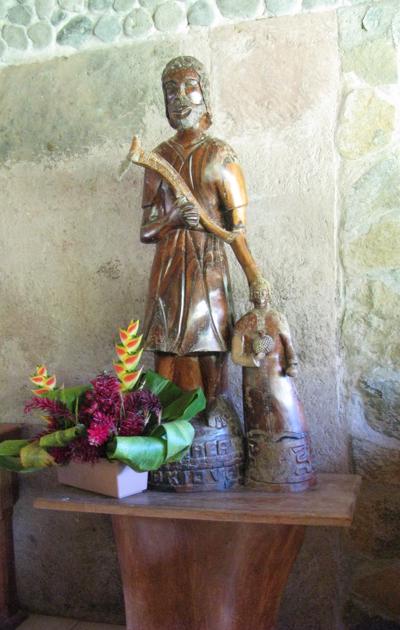
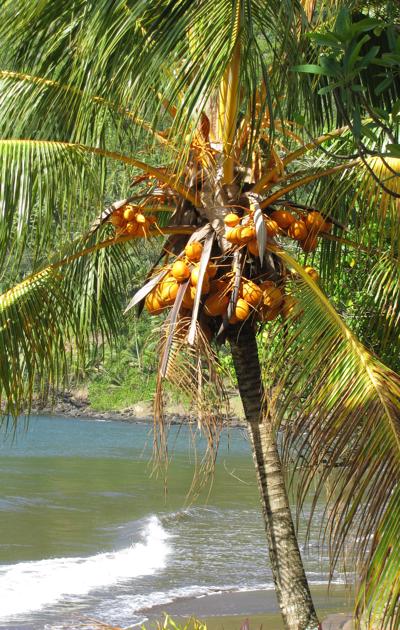
palm, and mango. We also see horses, cattle, and chickens that hang out along the roadside. Hibiscus, oleander and bougainvillea are also popular here and add color. When we take a walk along the shore road we see the same type of stone, un-carved, that was used in Easter Island to make the Maoi. I wonder if the culture of the Moai started here. They are of the same size and distance from the water as the smaller, earliest Moai. Most of the people, 2,000 or 2/3rds that live on this island live in Taohae bay where we will be staying. It is lovely and picturesque. Another 1000 people are in smaller areas scattered at the different bays. Having a boat to get around is as important as having a vehicle.
photo #11 Chick and I pose at a large banyan tree. The tree is a big feature of the archaeological site. It contains a jail room below the trunk where prisoners would be kept till it was time to kill and eat them.
We make a visit to the local produce market and are able to get
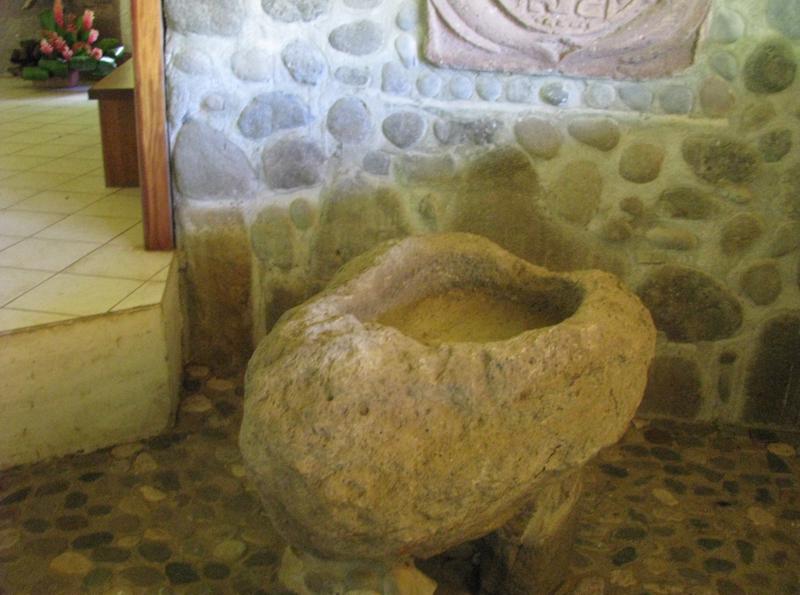
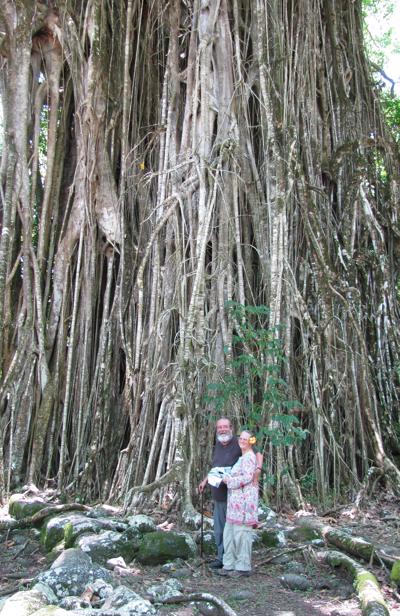
cabbage, tomatoes, pomelo, avocado, bok choy, papaya, and sweet potatoes. We have some rice with us and it makes for a fine lunch and dinner. The next day we try the hotel restaurant where they make us no oil vegan food, salad with lime juice, sweet potato, rice and corn, and steamed green beans but without any hint of a spice or herb. It was fine but we can do better in our room, even with only a microwave and a small bowl.
photo #12 Another Deep One.
photo #13 and #14 Sensitive grasses, two types. Leaves either fold in half or turn so they are smaller when they are touched.
Thursday September 29, 2016 We find out that our watches are set to the wrong time. Time here is set one half hour ahead of Tahiti. Strange surprise. No wonder we are late to our appointments these last few days. I guess most people know because they are using their phones.
Our tour takes us to restored Archaeology sites. We visit a carved


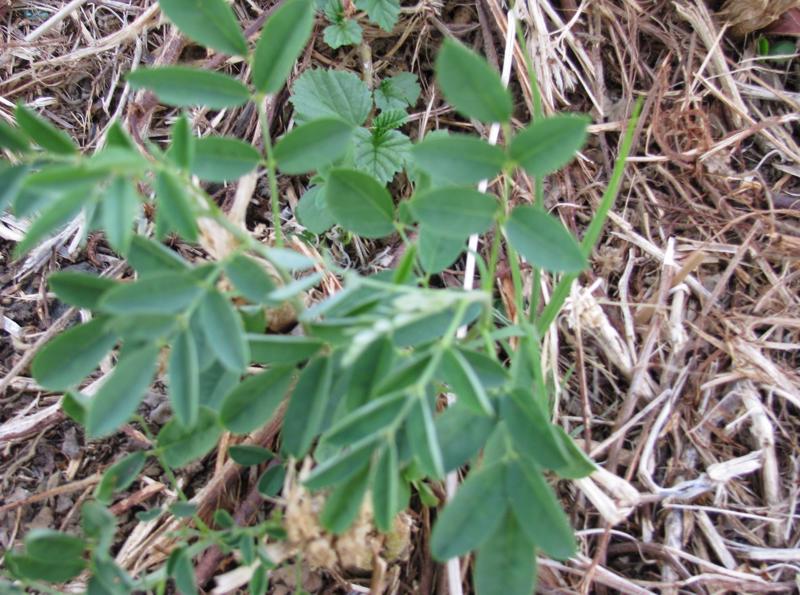
wooden church which has some old worked stone mounted for us to see. Our guide, Richard, stops frequently to allow photos and he points out various trees along the route. We even get a cashew fruit with nut to try when we get back to our room. It tastes good except for the severe astringent after taste that makes me pucker too much for comfort. Chick likes it and finishes my half. We visit a carved wooden church with old worked stones on display. We visit some archaeological sites where they have been doing restoration work. They seem to target an area and restore it before using it as a site for an interisland cultural festival. Here it happens every 12 years while the festival travels from island to island. New sculpture is being made. The historical sculpture has mostly been lost due to the missionaries discouraging the old sites and tikis. Like Easter Island, the people here were plagued by European diseases that reduced their population by 95% per our guide. Losing all of the leaders, craftsmen etc caused a cultural devastation.
photo #15 Polynesian chickens with vertical tails.
photo #16 This old piece of rock mounted at the entrance to the church yard was used as a mirror, to pound plants for medicines and to sharpen stone tools.
Now the people here are using cell phones and our guide complains that his brand-named shorts cost him $100.00. I guess the young people here have embraced the sales pitches along with the technology. We stop for lunch during our tour and are able to get no oil white rice, breadfruit, manioc and fresh salad with lime for dressing. We get to see eels in the stream that runs by the restaurant and feeds the eels for our entertainment. I spot different types of sensitive grass a couple of times when we stop for photos. It will turn, curl or fold its leaves if it is touched.
Diving here with Pi-pa-po was a disappointment. The sea is rough enough to obscure visibility. I hear reports of the water being like a lake but not now. Bad timing for diving in one of the great places to
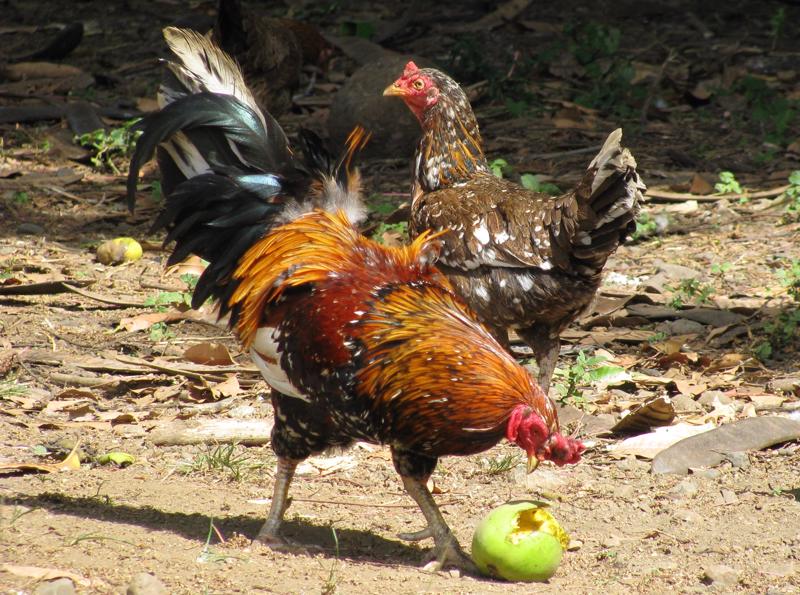

dive.
We enjoy a lot of sitting and relaxing. I walk to the stores a mile or so away. One evening I get a ride home with my box of groceries from a young local woman.
Our Hostess has a small but really wonderful collection of artifacts found on the island. It is better than the museums we saw on our island tour.
Begin vandaag nog!
Waar wacht je nog op? Leg je avonturen vast in een digitaal dagboek dat je kan delen met vrienden en familie. Wissel op elk moment tussen verschillende apparaten. Ga aan de slag in onze online applicatie.
